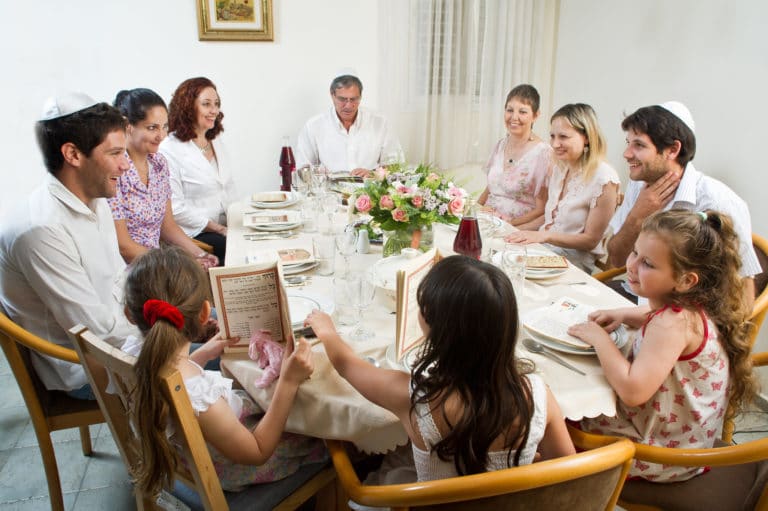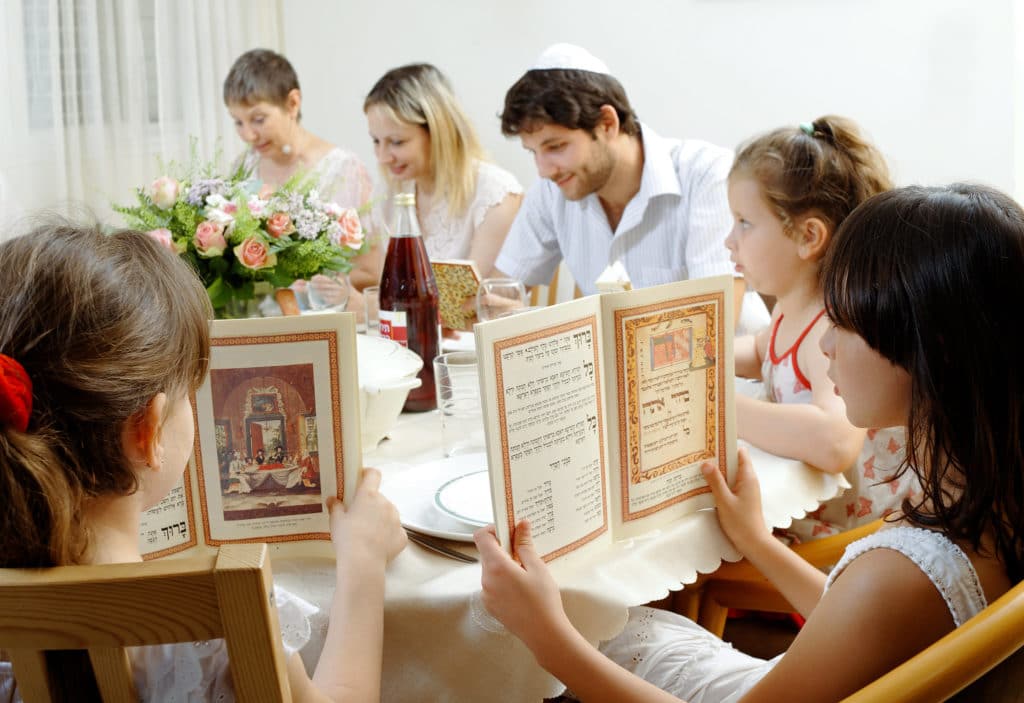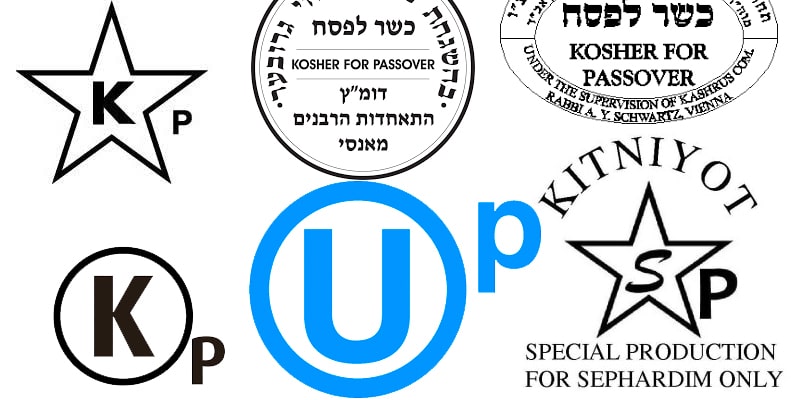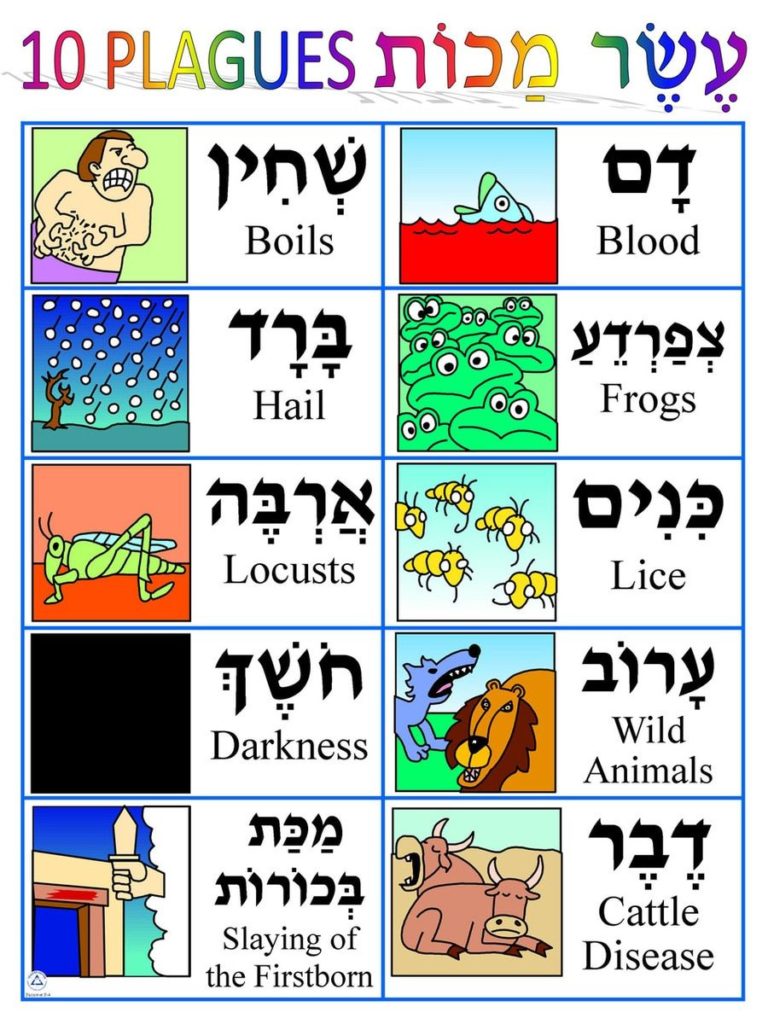
Here’s a rundown of what you need to know about Passover, the seven- or eight-day holiday (depending on where you live) and how to celebrate it.
Read more: Get our guides to all the Jewish holidays.
When is Passover 2024?
Passover starts the evening of Monday, April 22, 2024, and goes until the evening of Tuesday, April 30, 2024. This corresponds to the 15th through 22nd of the Hebrew month Nisan.
However, in Israel as well as in many Reform Jewish communities, Passover is celebrated for seven days as opposed to eight (i.e., through the 21st of Nisan).
Like other Jewish holidays, the timing of Passover is based on the Hebrew calendar, so the exact dates in the secular calendar vary each year. Passover generally begins in late March or early April.
What is Passover all about?
Passover celebrates the Jewish people’s miraculous exodus from Egypt as told in the Biblical book of Exodus. Its name comes from the story of the tenth plague (the death of the firstborn), which passed over the Israelites’ houses, sparing their children.
Rabbi Jonathan Sacks explained the rationale of Passover this way: “The journey from slavery to freedom is one we need to travel in every generation. So we were commanded to gather our families together every year at this time and tell the story of what it was like to be a slave and what it felt like to go free.”
The Passover story is told and even reenacted at the seder, the traditional Passover dinner. For example, bitter herbs are eaten so as to “taste” the bitterness the Israelites endured as slaves.
With its central theme of redemption, Passover is a time not only for Jews to connect with their own history, but also to be mindful of the suffering of others and those who are oppressed today. At the seder, many Jews draw attention to present-day issues of justice (in and out of the Jewish community) with the hope that all people will find freedom.
How to wish someone a happy Passover
There are several different ways to greet someone on Passover. You can simply say “Happy Passover” or use one of the following:
- Chag sameach (Happy holiday)
- Chag Pesach sameach (Happy Passover)
- Chag kasher v’sameach (Have a kosher and happy Passover)
- Gut yontif (Good holiday in Yiddish)

Passover basics
If you’re attending a seder, here are a few key components you can expect.
Seder plate: The seder plate contains six foods: a green vegetable (usually parsley), haroset (a mixture of fruit and nuts), two types of bitter herbs, a shankbone and egg. Each item symbolizes a part of the Passover story.
Haggadah: The Haggadah (which means “telling” in Hebrew) is a book used as a guide to the Passover seder. It contains the order of the service and the story of the Exodus from Egypt.
Matzah: Matzah (unleavened bread) symbolizes the food the Israelites brought with them on the Exodus: the Israelites were in such a hurry when leaving Egypt that they did not have time to leaven their bread.
Afikoman: This is a piece of matzah that is eaten at the end of the Passover meal. It is also commonly a game for children: the Afikoman is hidden during the seder, and the kids compete for prizes to find it.
Wine: Each participant drinks four cups of wine during the seder. This number could represent different articulations of divine redemption in the Exodus story: “I will bring you out,” “deliver you,” “redeem you” and “take you to Me for a people.”

What is kosher for Passover?
During Passover, Jews are forbidden to eat chametz (translated as “leavened bread”). This refers to food prepared from wheat, barley, oats, spelt and rye that has come into contact with water and leavened or “risen.” Some Ashkenazi Jews (Jews whose ancestry is from central and Eastern Europe) also count rice, millet, corn and legumes as chametz and these are also forbidden on Passover. This category of foods (considered chametz by some Jews and allowed on Passover by others) is known as kitniyot.
Traditionally observant Jews may also avoid processed food that is not explicitly labeled “kosher for Passover.” The letter “P” is often added to kosher symbols found on packaging to indicate the item does not contain chametz and is allowed. However, not all Jews who partake in the holiday abide by these restrictions. For example, some choose to avoid bread and pasta, but eat other foods that are widely considered chametz such as cereal and cake.
| Kosher for Passover | Not Kosher for Passover | Kitniyot (Debated) |
| Almond flour Potatoes Tequila Tree nuts Baking soda Baking powder Vodka (potato-based) Tapioca Almond flour Almond milk | Oats Oatmeal Most cereal Beer Couscous Farro Flour Flour tortillas Granola (with oats) Vodka (wheat-based) Egg noodles (wheat-based) | Rice Quinoa Corn Hummus Peanuts Peanut butter Tofu Cornstarch Popcorn Soy Soy sauce Beans Lentils Buckwheat Corn tortillas (wheat-free) Vodka (corn-based) Chickpeas Canola oil |
Preparing for Passover
The law against chametz doesn’t stop at eating it: having bread products in one’s possession is forbidden as well. Therefore, leading up to Passover, traditionally observant Jews thoroughly clean their kitchens and even their entire homes, and remove all traces of chametz. This includes “kashering” (making Kosher through rigorous cleaning) dishes and utensils that will be used during the holiday. Because kashering is such an involved process, many opt to use a separate set of cookware, dishware and utensils designated for the holiday.

The Passover story
The Passover story is recorded in the book of Exodus and took place more than 3,000 years ago. The Jewish people were slaves in Egypt under the bitter rule of the Pharaoh of the time (possibly Rameses II who ruled from 1290 to 1223 BCE). Deciding that the Jewish people were too numerous, Pharaoh issues a genocidal decree: every Jewish newborn male would be thrown into the Nile River to drown.
The story begins when Jocheved, Moses’ mother, decides to hide her newborn son to prevent his murder. However, after three months, Jocheved can no longer hide her infant quietly. She chooses to risk everything by sending her child down the river in a basket, hoping that he will miraculously reach a safe destination. The baby is discovered by Pharaoh’s daughter who names him Moses, which comes from the Hebrew verb meaning “to draw out” of water.
The entire story is beautifully depicted in “The Prince of Egypt.” Here’s the moving scene of Jocheved placing baby Moses in a basket in the river as his older sister Miriam looks on:
Moses grows up in Pharaoh’s palace and is raised as an Egyptian. One day, an adult Moses sees an Egyptian beating a Hebrew slave; Moses decides to defend the slave from this cruel treatment and kills the Egyptian. This puts Moses’ life in danger, and he is forced to flee from Egypt to the distant land of Midian (believed to be present-day Saudi Arabia near the tip of the Red Sea). While in Midian, Moses meets his wife Zipporah, and the two have a son named Gershom.
Meanwhile, the Jewish people are still toiling under the backbreaking labor of Pharaoh. In a critical turn of events, while Moses is herding his sheep in Midian, God appears to him through the flames of a burning bush and tells Moses to go back to Egypt and say to Pharaoh, “Let my people go.” This iconic moment begins Moses’ blossoming career as the greatest prophet in Jewish history. Moses becomes the only prophet in the Bible to ever speak with God face to face, and the only one who could speak with God whenever he wanted.
After initially protesting the plan, Moses ultimately agrees to carry it out and returns to Egypt, his family by his side. At this point, there’s a new Pharaoh in town, most likely Merneptah who ruled beginning in 1223 BCE. Through Moses, God inflicts 10 devastating plagues onto the Egyptian population in order to set the Hebrew slaves free.

Pharaoh resists each round of divine intervention and refuses to let the Jewish people go until the tenth and final plague, the death of the firstborn. Ahead of this, Moses tells the Jewish people to put the blood of a lamb on their doors as a symbol for God to “pass over” their homes and spare their children.
Pharaoh’s son is among the thousands of Egyptians to die. Faced with this personal tragedy, he finally agrees to let the Jewish people go. However, just as the Jewish people leave, Pharaoh changes his mind again and chases after them. With Egyptian chariots on their heels, the Jewish people come to a dead end at the sea of reeds.
It is here that the Jewish people witness yet another astonishing act of divine intervention: the waters part, enabling the people to cross the sea and reach the opposite shore. At this moment, the walls of the water fall down behind them, drowning Pharaoh’s entire army. Moses goes on to lead the Israelites through the desert to the brink of the Promised Land.
The 10 Plagues
God sends 10 plagues to Egypt to persuade Pharaoh to let the Israelites go. During the seder, participants pour a drop of wine out of their cups for each plague: according to many interpretations, this serves as a reminder of the pain the Egyptians endured in the process of the Jewish people’s liberation.
The Ten Plagues
- Blood
- Frogs
- Lice
- Flies
- Pestilence
- Boils
- Hail
- Locusts
- Darkness
- Killing of the firstborn
The Seder
The Four Questions: Traditionally recited by the youngest child at the seder, the Four Questions highlight the purpose of the Passover seder and what makes it different from a typical meal. These questions, which come early in the service, set the stage for telling the Passover story.
The Cup of Elijah: In addition to the four cups of wine drunk by each guest, an additional cup of wine is poured in honor of Elijah the prophet who is thought to “visit” each Passover seder. According to tradition, Elijah will one day arrive and proclaim the advent of the messianic age.
Passover songs
Below are lyrics from a couple of favorite Passover songs found at the end of the Haggadah:
Dayenu (“It Would Have Been Enough”)
Ilu hotzi hotzianu Hotzianu mimitzrayim, Hotzianu mimitzrayim, Dayenu! Ilu natan natan lanu Natan lanu et hatorah Natan lanu et hatorah Dayenu! If He had brought us out from Egypt, it would have been enough! If He had given us the Torah, it would have been enough!
Eliayahu HaNavi (“Elijah the Prophet”)
Eliyahu hanavi, Eliyahu hatishbi Eliyahu, Eliyahu hagil'adi Bim'heira b’yameinu, yavo eleinu, im Mashiach ben David May Elijah the prophet, Elijah the Tishbite, Elijah of Gilead, quickly in our day come to us heralding redemption.
Originally Published Mar 15, 2021 12:02AM EDT
